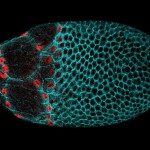Link to Pubmed [PMID] – 11855840
Biochem. Biophys. Res. Commun. 2002 Mar;291(3):655-62
Mouse Msx 1 gene, orthologous of the Drosophila msh, is involved in several developmental processes. BMP family members are major proteins in the regulation of Msx 1 expression. BMP signaling activates Smad 1/5/8 proteins, which associate to Smad 4 before translocating to the nucleus. Analysis of Msx 1 promoter revealed the presence of three elements similar to the consensus established for Mad, the Smad 1 Drosophila counterpart. Notably, such an element was identified in an enhancer important for Msx 1 regulation. Gel shift analysis demonstrated that proteins from 13.5 dpc embryo associate to this enhancer. Remarkably, supershift assays showed that Smad proteins are present in the complex. Purified Smad 1 and 4 also bind to this fragment. We demonstrate that functional binding sites in this enhancer are confined to the Mad motif and flanking region. Our data suggest that this Mad motif may be functional in response to BMP signaling.
